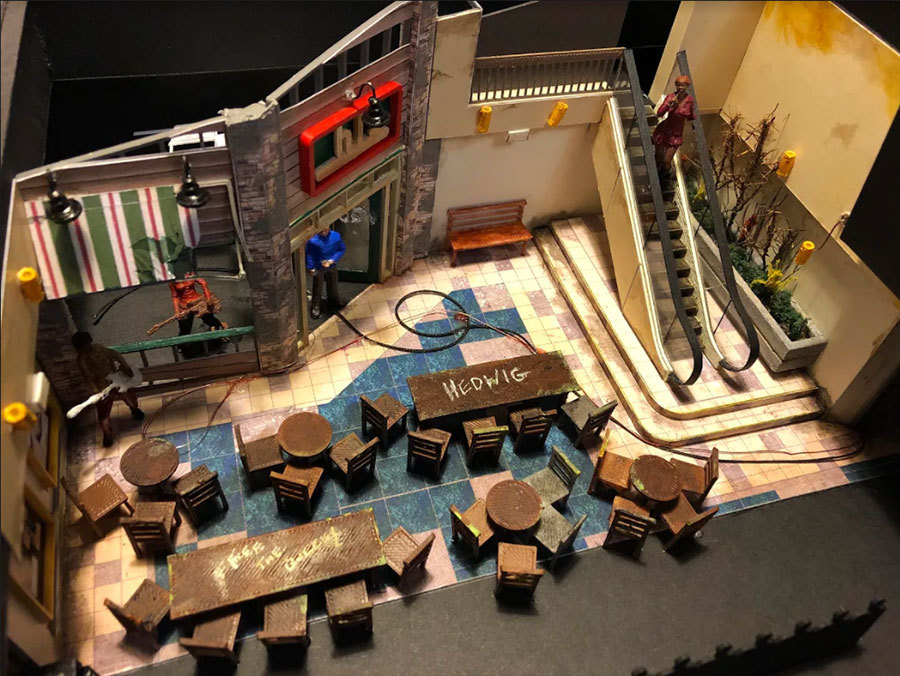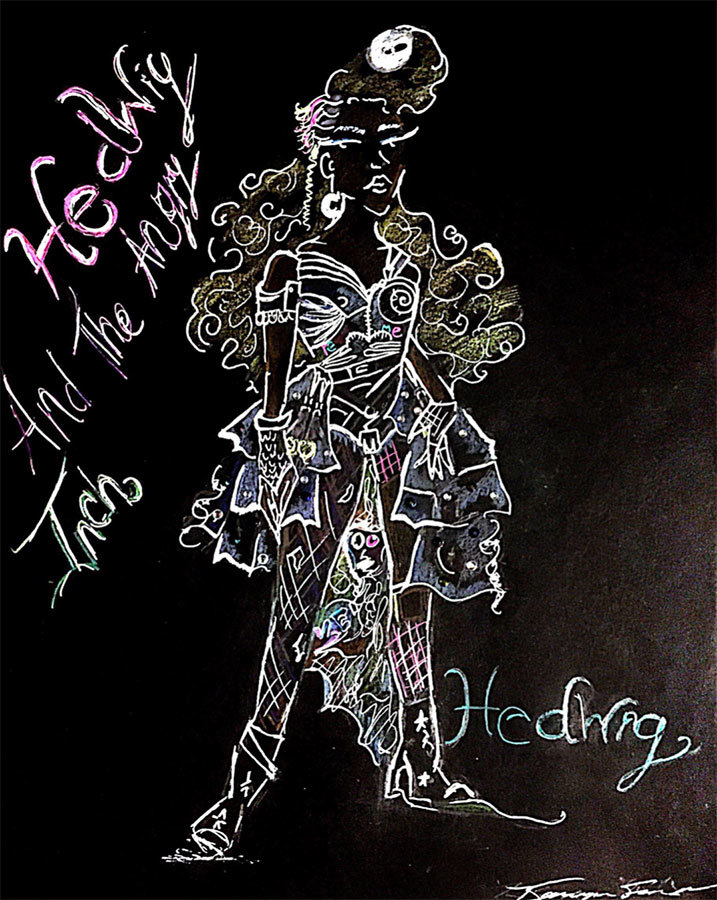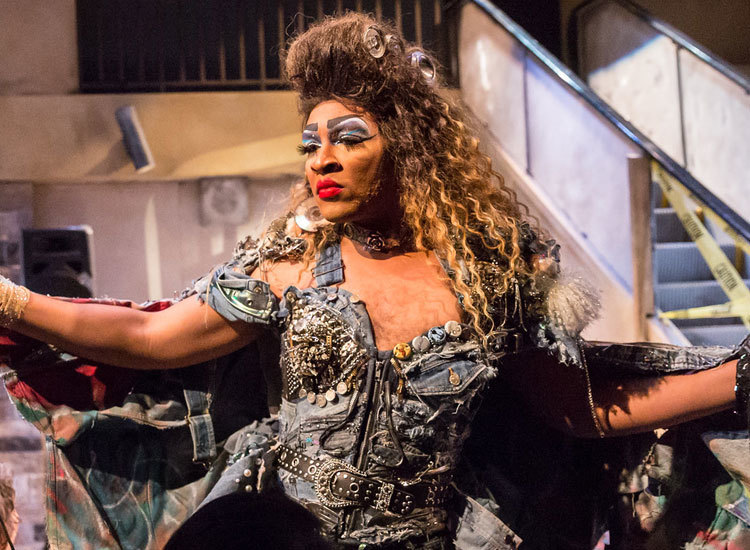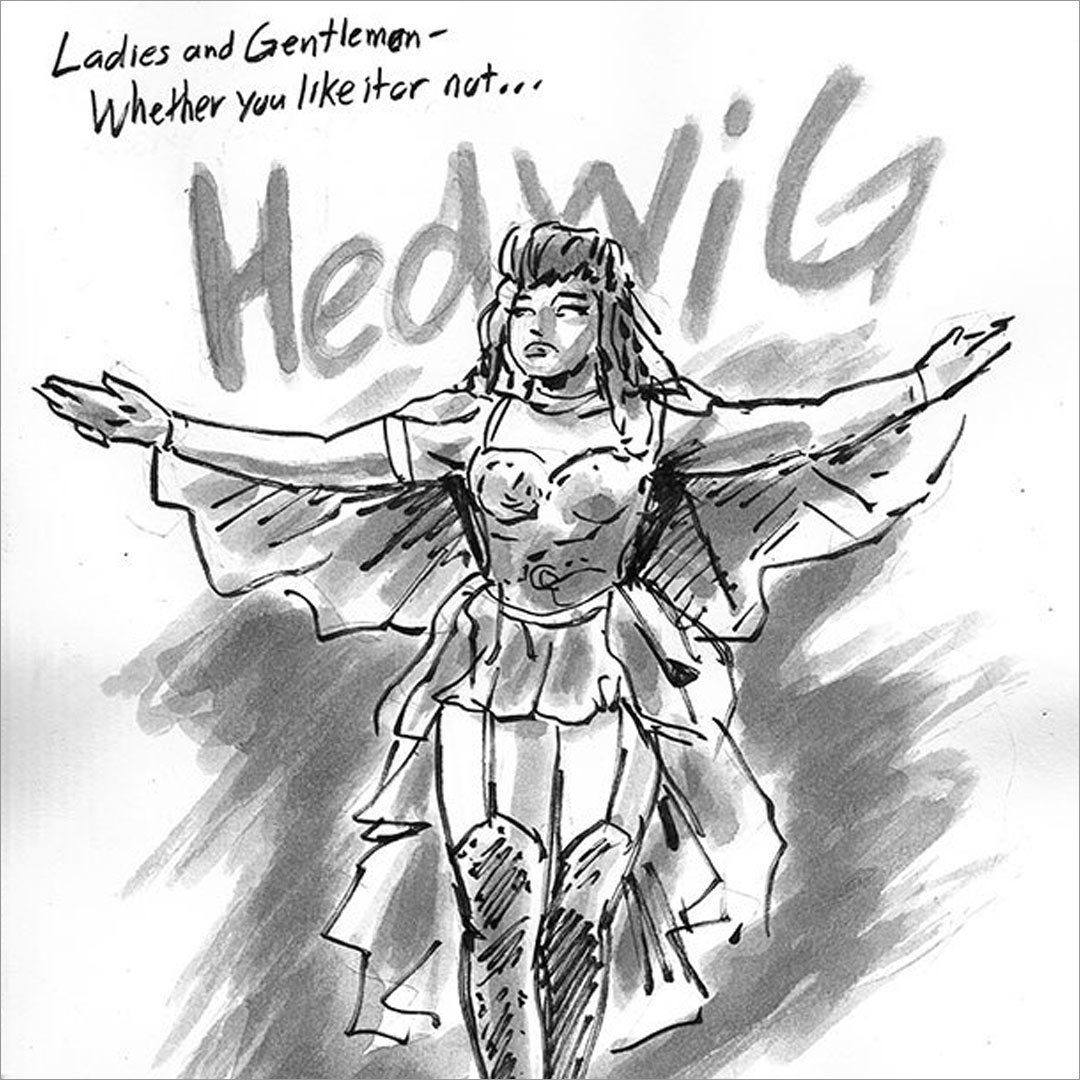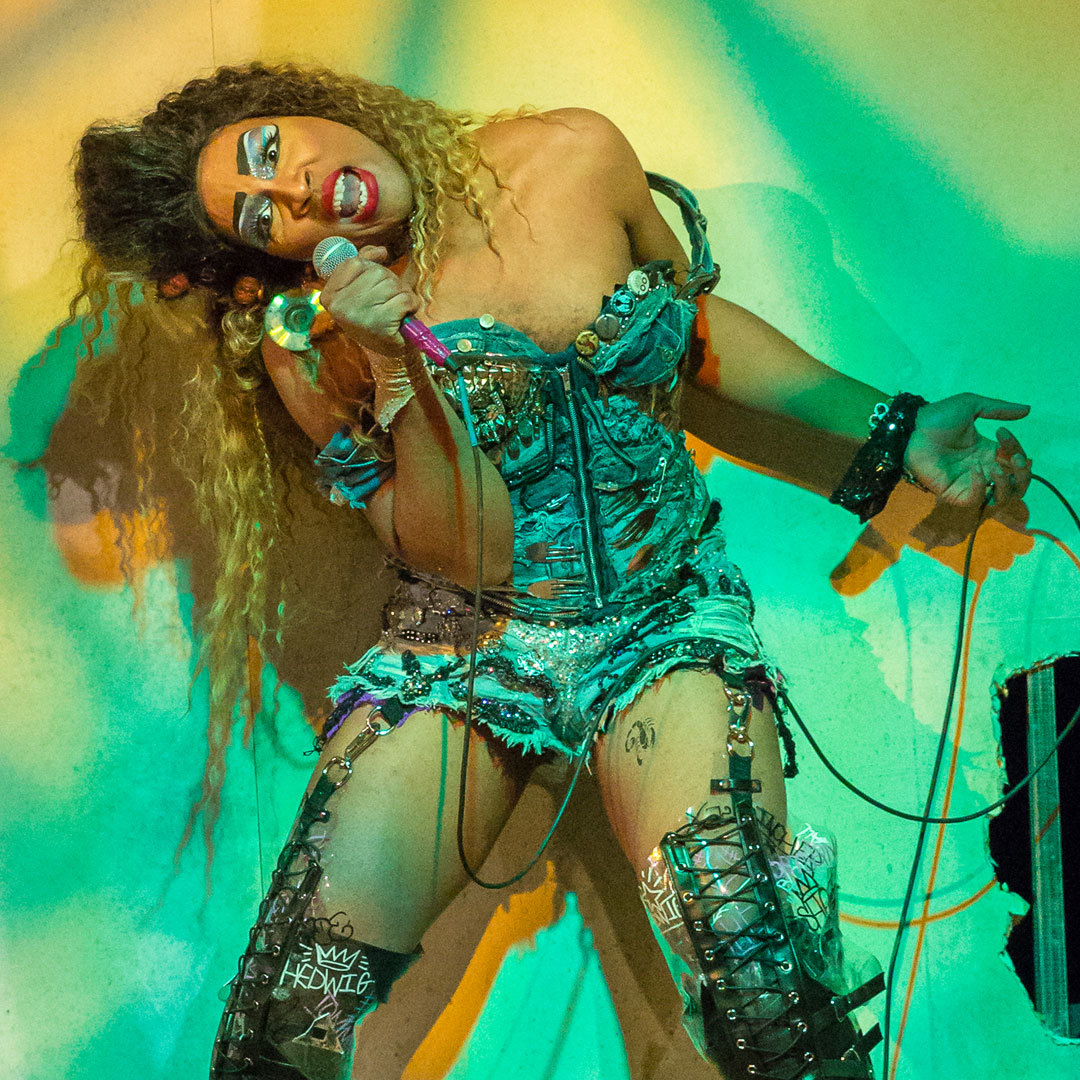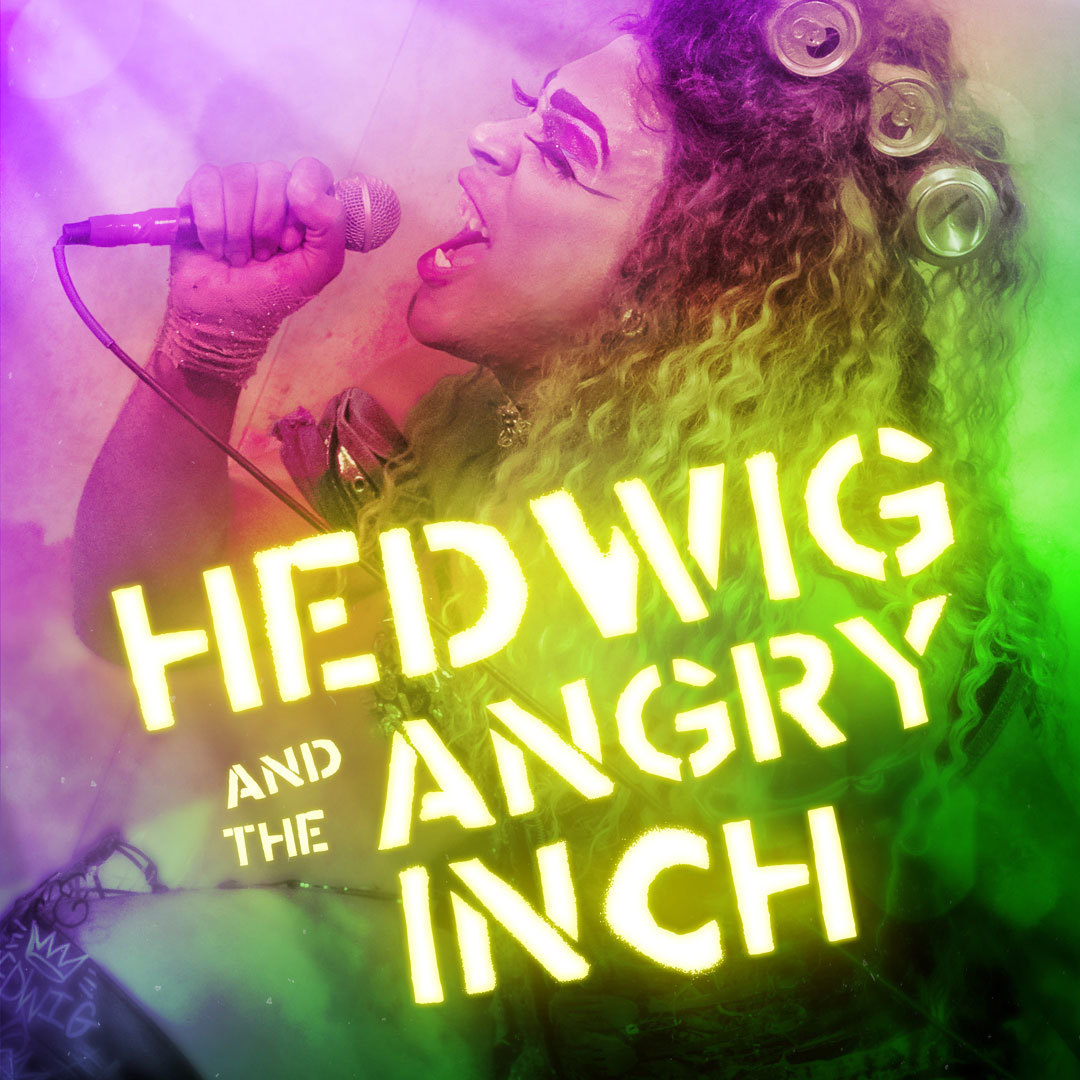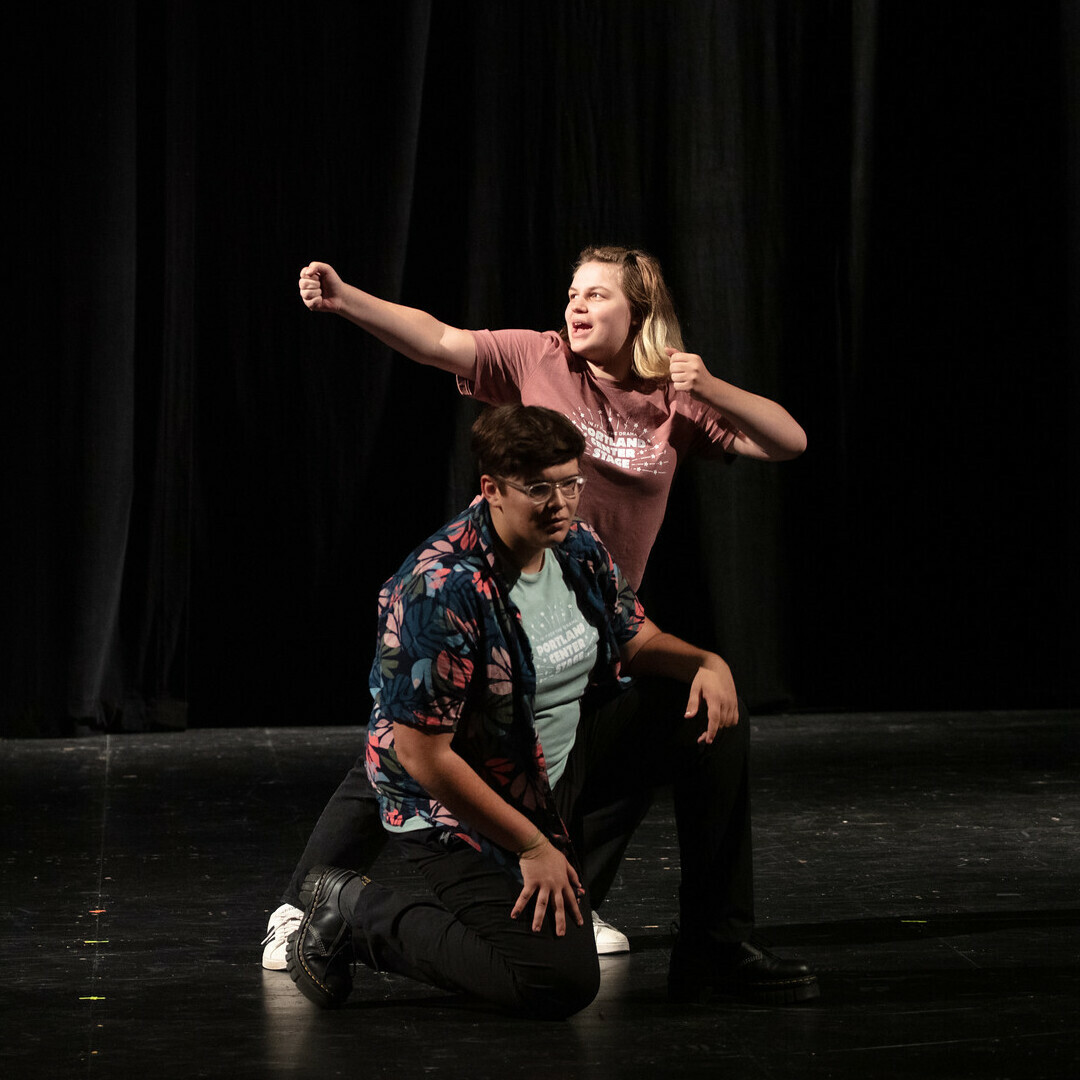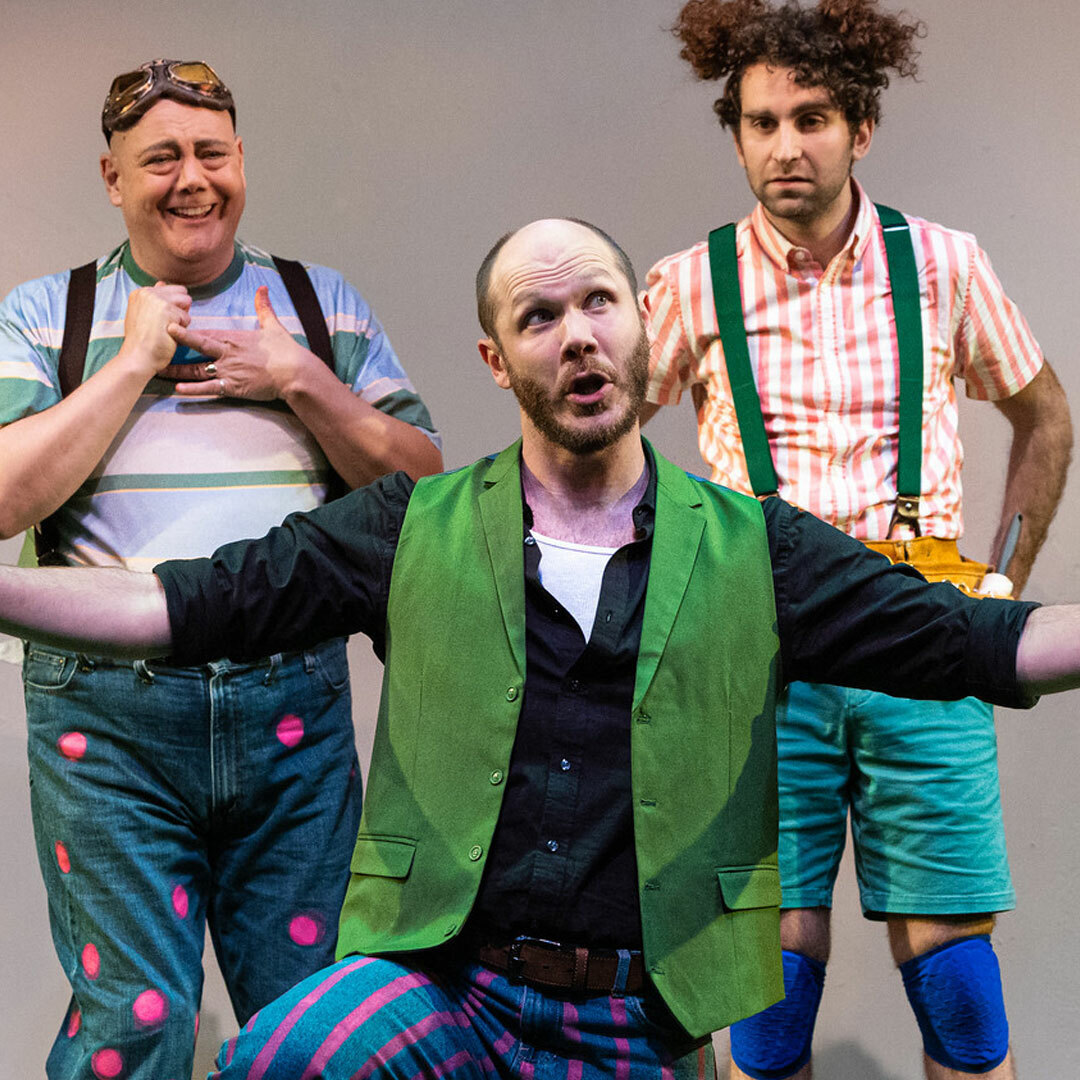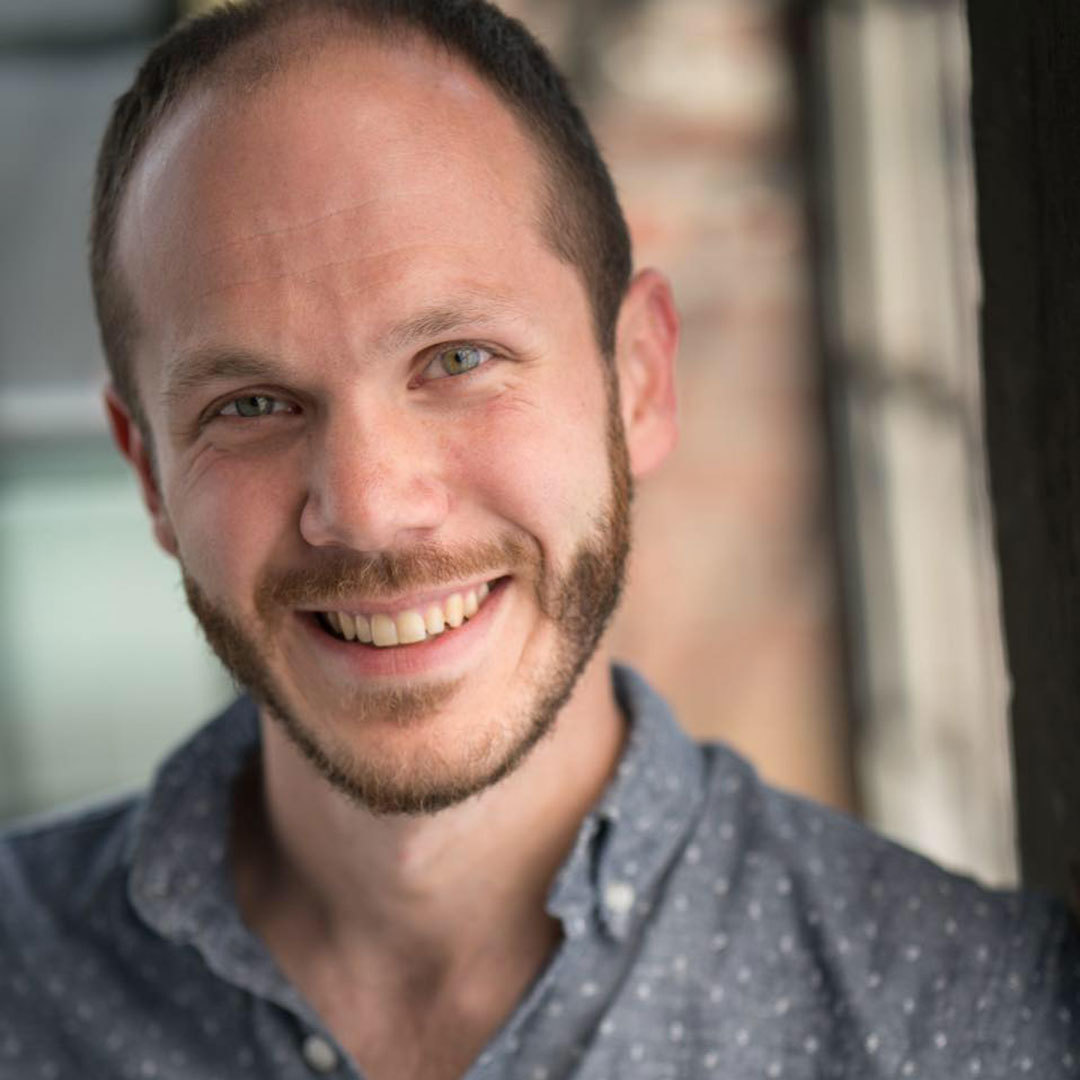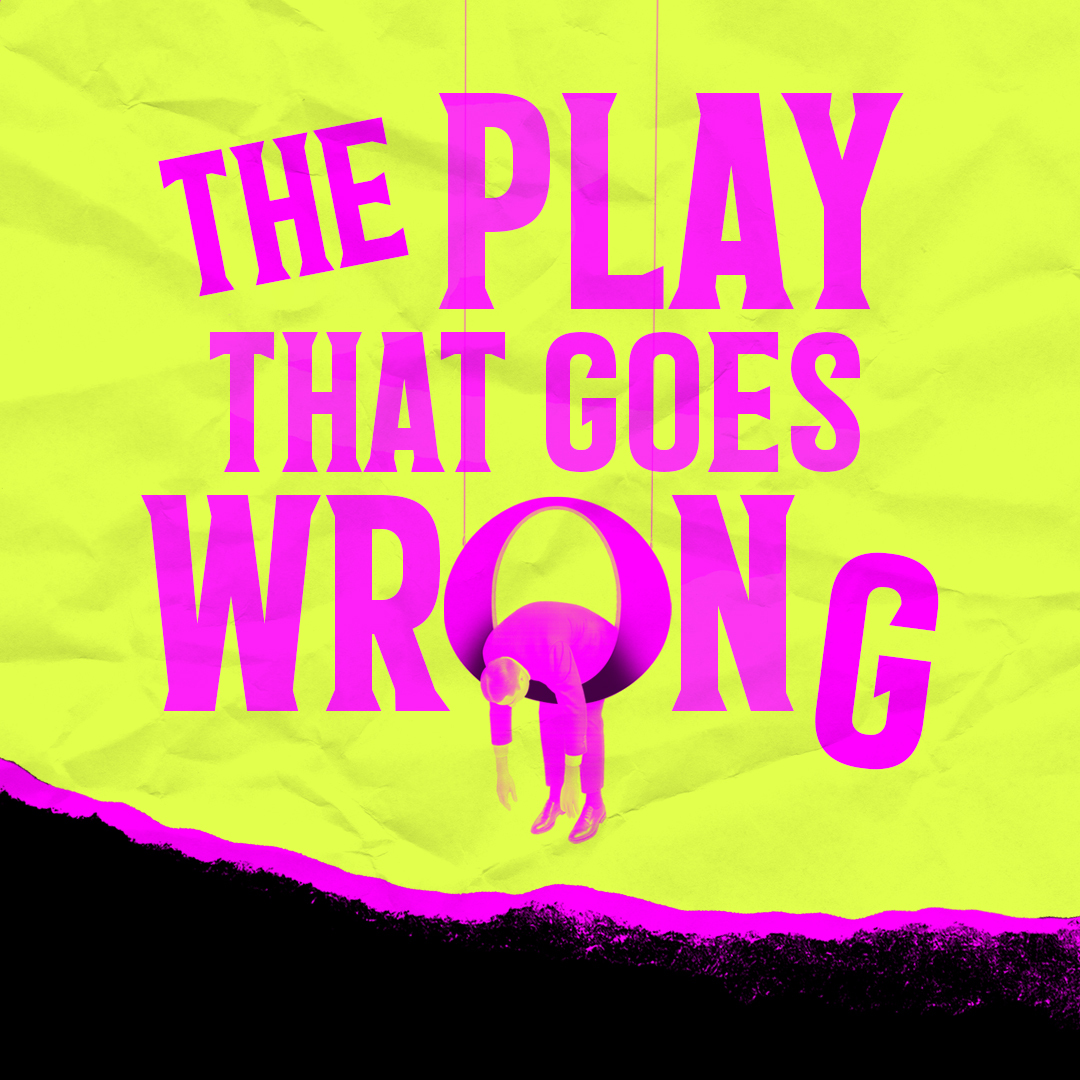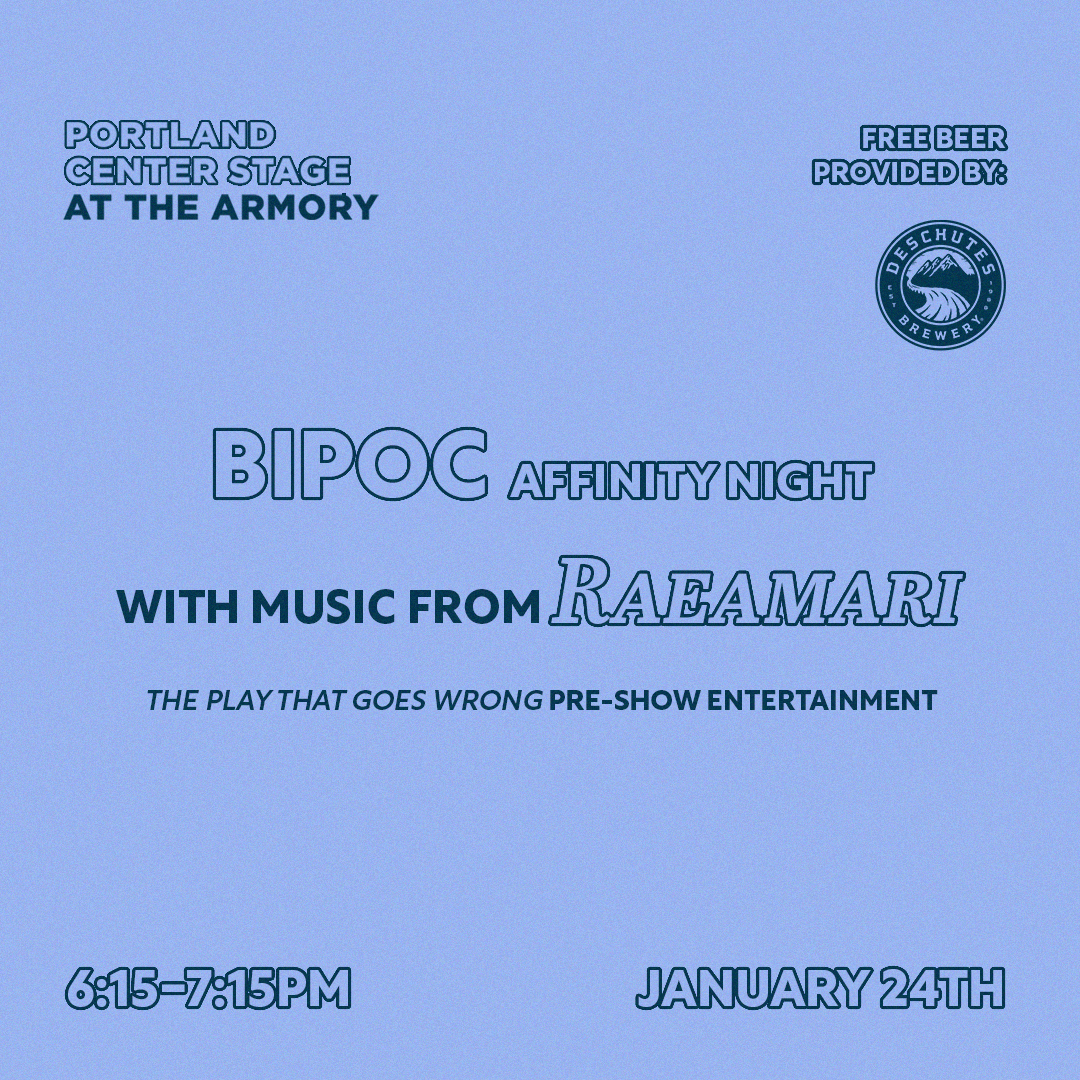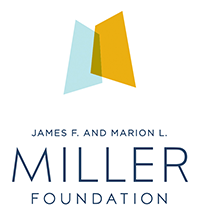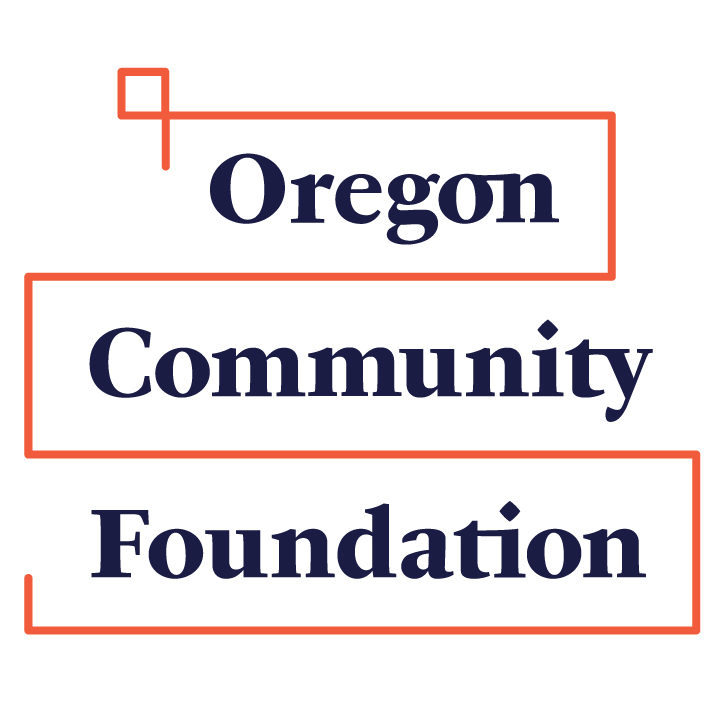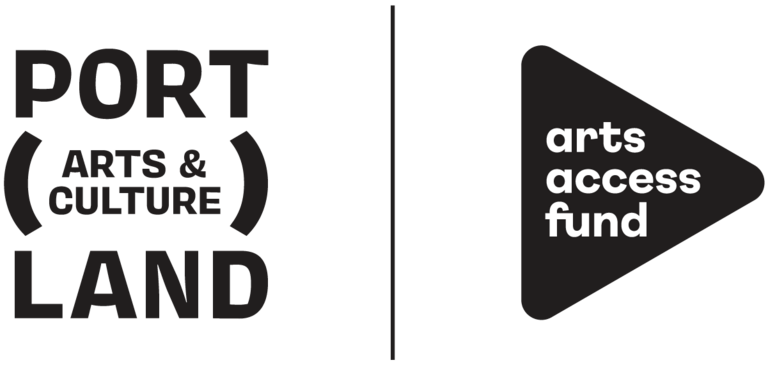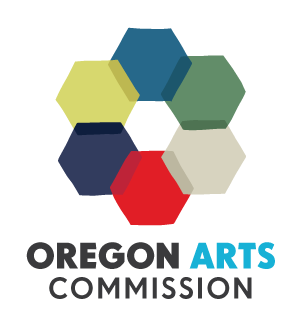Behind the Curtain: Spotlight on Design
Britton Mauk and Dominique Fawn Hill, the scenic and costume designers of Hedwig, respectively, chat with Kamilah Bush, PCS’s literary manager, about their approaches to design and this bold take on Hedwig.
Kamilah Bush: How do you begin a design? What were the seeds of the work on Hedwig?
Dominique Fawn Hill: I usually start with infinity. What I mean by this is, dreaming without limits and then toning it down as the process progresses. This process allows me to find and tangibly transform the soul message of the show. My medium of choice when I am designing is collages. I create a main “world collage” that inserts the overall costume mindscape of the production, and then I break it down per character. The seed of the Hedwig design resided in the unspoken nuances of the subculture of past/present hip hop, rock, and R&B. So many icons of these genres had to find solace, not only within their music but also with the mere fact of them being a transactional/fictitious reflection of beauty and chaos; Hedwig was just a byproduct of “making lemonade out of coffee.”
Britton Mauk: When designing, my approach takes at its starting point the visual, how an audience will view a performance. I therefore begin each design with reactionary image research, searching for and collecting images that I see as connected to a performance and that produce a visceral reaction in me. I find that building from a set of images helps me to process and reflect the broader themes in a play, and can be an important tool for communication with directors and other designers. Image research helps me to dig deeper and especially helped when Chip Miller said, “Let’s do it in a Chili’s.” That spun into moving the Chili’s into a rundown mall food court, to add to the comment on capitalism, consumerism, and assimilation. All things Hedwig rages against.
KB: Britton! Let’s talk about that escalator!
BM: I really wanted a grand entrance and exit for Hedwig. She deserves an entrance no one else has the opportunity or allowance to even transcend. Hedwig’s experience is unique and complicated just like an escalator. It helps that the escalator is broken just a bit, like Hedwig. But, she rises again and again. We were very lucky that the technical staff was able to track down a company that was willing to part with an escalator they were scrapping. I could not have asked for better authenticity.
KB: Dominique, for some people Hedwig has its own kind of iconography. How do you balance what people think they know about a show and your own sensibilities and ideas? Let’s talk about that soda can wig for example!
DFH: Something that Chip and I discussed towards the very beginning of our process was that we wanted to be a bit anachronistic with the storyline to make it fresh to the contemporary eye (thus basing Hedwig on the modern-day gravitas of Beyoncé). Hedwig is an iconic staple within theater history, but to cast Hedwig as a person of color is a clear and bold choice. Hair alongside the whole diaspora of Black people is a pivotal element. It is deeply rooted sometimes (no pun intended lol) within Eurocentric standards and also is still seen as radical if it is within its natural state. So if you are a person of color and your hair is blond and permed, that is a clear choice for expression because we are not a monolith, but it also lives within assimilation. Also, within Hedwig's hair, there are not only soda cans but barbies that are of color — two elements that focus on accessibility and stereotypes. Overall, I just love subtle details that blur the test of time and identity.
KB: Musicals need bands and designers often have lots of conversations about what the band looks like and where they live. In this Hedwig, they’re right on stage. How did you go about incorporating them into your design?
DFH: It was such a rad learning experience working with the band! We were in constant communication about aesthetic, practicality, and personal identity in order to create their looks. So many rock bands during this time verged on the path of gender neutral, so we had to adjust the looks a bit for their personal gender comfort, while simultaneously keeping the vibe of the costume design and making sure that none of the costume additions (such as raccoon tails) impeded them from reaching for their instruments.
BM: Hedwig needs her band, but she also likes it all about Hedwig. Them being conveniently placed within the Chili storefront helped keep them contained. We knew the band needed to be accessible, but also out of the way. They were real troopers to be packed away in the corner.
KB: What is your favorite part of the design process?
DFH: The fittings! All of the countless research months, days, and late nights come down to being in that room and finding the “look.”. There is a special moment in the fitting in which all of the esoteric costume magic completes itself, and the actor and you look in the mirror and (in my mind) I hear a click and sometimes for the actor there is a slight smile or tilting of head. Right after this moment there is a subtle shift in the air, because you both know that you nailed the costume truth. There is nothing like it.
BM: I love the collaboration. Be it with the director, design team, or the technical staff. I cannot do my job well or present the best design possible without all involved in the process. I am extremely thankful for all the talent I am surrounded by.
KB: What is your least favorite — or the part you find yourself having to work at the most at?
DFH: Hands down, it is when the show opens and you have to let your creative baby go. Aftering spending so much time with a project — seeing inspiration for it everywhere and having it in your mind all the time — inevitably, when the show opens there is a sense of excitement and mourning. So dramatic I know, but true.
BM: When we are in tech rehearsals, I start picking apart my design to find all the flaws. At this point, there is not much I can do and it is mostly just my anxiety getting the best of me. You can always be making a more perfect design. But, there is only so much time in a day or in a process.
KB: What inspires you?
DFH: The empathy within humanity. You can learn so much by just simply standing still and watching people.
BM: Flipping through a myriad of art, media, and architecture magazines. Allowing my imagination to run wild and be unhampered by a blank google search box, for example.
KB: Anything else you’d like to share with us about yourself or about design?
BM: I am so happy that everyone is getting a second chance to see Hedwig at PCS. It was such a fantastic process the first time around for all of us involved. I feel extra privileged for my set design to be coming out of storage. Usually, once a production initially closes, the set goes into the garbage or is scrapped for parts. Inclusive and brave stories like Hedwig are the type of productions I feel connected to the most. I am thankful to be a part of this production.
DFH: Live in abundance, and allow your story to be your fuel, period!
Portland Center Stage is committed to identifying & interrupting instances of racism & all forms of oppression, through the principles of inclusion, diversity, equity, & accessibility (IDEA).


